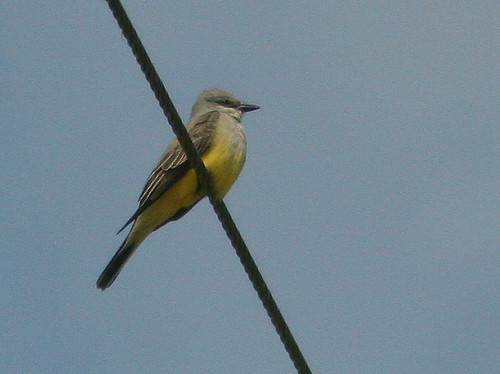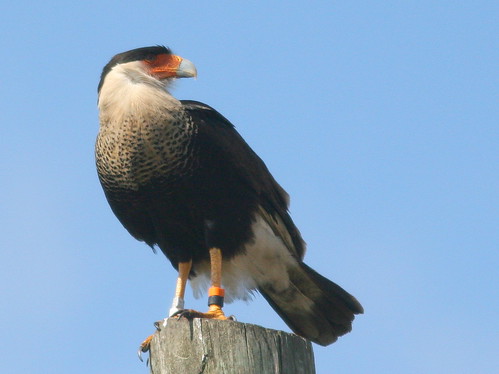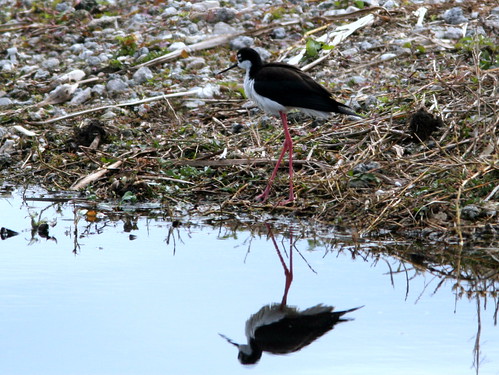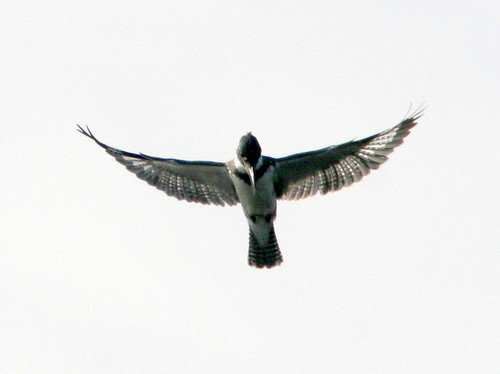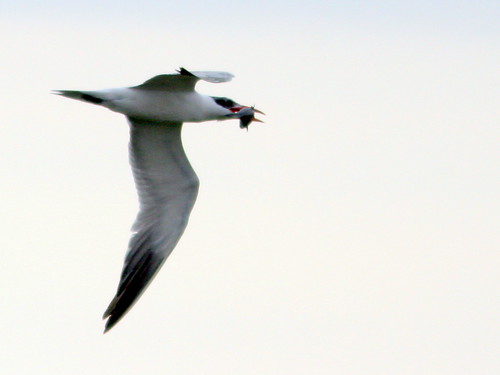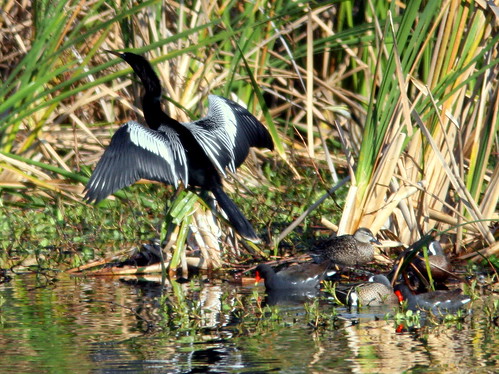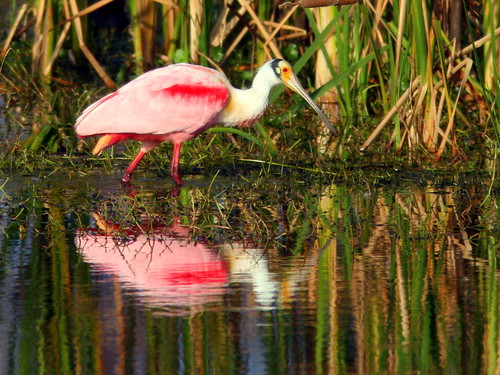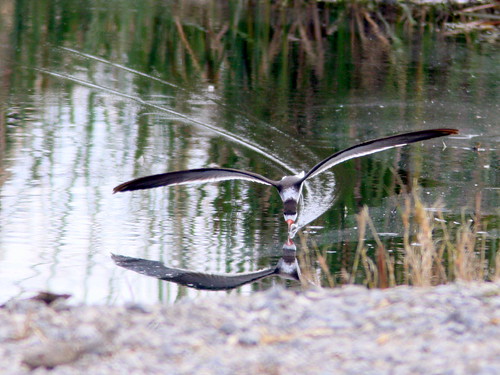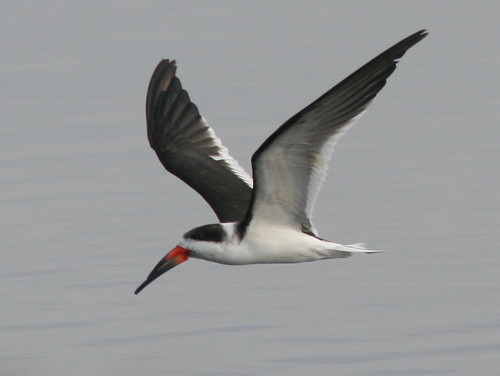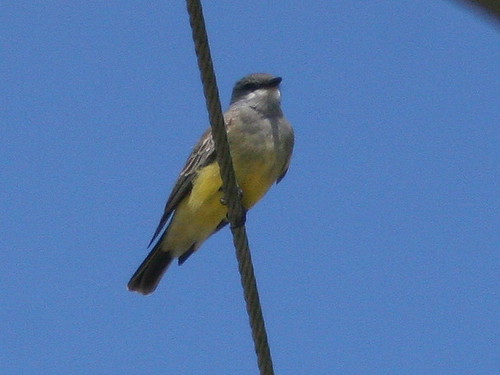Birds and birders flock to water treatment plants. My first experience with one was the sewage pond at Fort Bliss in El Paso, Texas. It was a green oasis in the otherwise arid desert, chock full of shorebirds. It smelled to high heaven!
This one has a modest name, Stormwater Treatment Area Number 5, STA-5 for short, managed by the South Florida Water Management District, and located south of Lake Okeechobee in no-man’s-land of Hendry County. In the middle of the sugar cane fields, STA-5 consists of four large shallow ponds that occupy an area of eight square miles. Audubon of Southwest Florida calls it one of the best birding spots in all of Florida.
Similar to domestic sewage settling ponds, STA-5 receives waste water and allows impurities to precipitate out and serve as food for millions and billions of trillions of microorganisms, algae and water plants. But unlike urban sewer plants, the source of the water is runoff from Florida’s generous summer rains, and the waste is agricultural effluent from the many farms upstream. Fertilizers, pesticides and herbicides dissolved in the runoff are captured and stored before purified water is released into the Everglades. Phosphorus is the main culprit. The Everglades are historically poor in nutrients, and phosphorus stimulates the growth of cattails that overrun the sawgrass that normally carpets the River of Grass.
Although remote and at the end of a mile-long unpaved road, it is rather easy to find, about twenty miles south of Clewiston on otherwise good paved roads. The drive down to to STA-5 is a destination in itself.
A Crested Caracara roosted atop a utility pole:
A large flock of Black-necked Stilts waded in the shallow water of the northeast pond:
One stilt appeared out of place as it rested alone on the shore:
American White Pelicans were everywhere: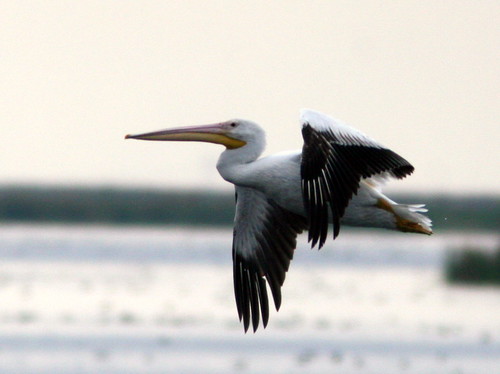
A compact group of Short-billed Dowitchers slept as one kept a wary eye on its surroundings: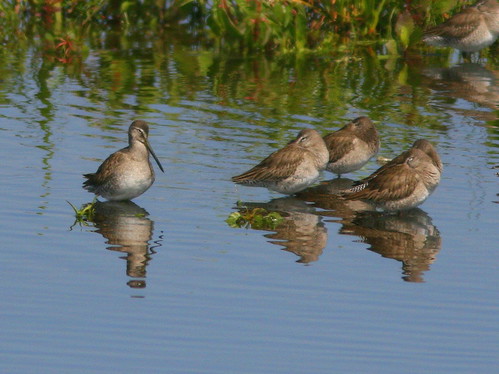
Another dowitcher foraged in the shoals:
A male Belted Kingfisher dove recklessly from its wire perch after a small fish: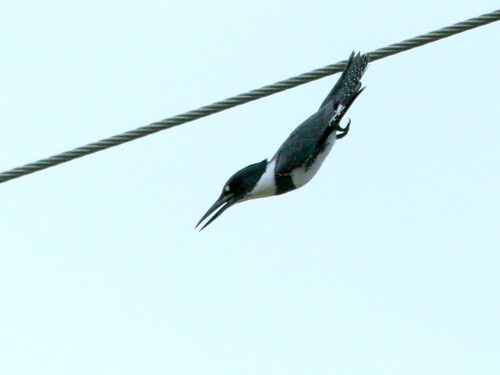
The kingfisher then hovered, hoping for another meal:
It stayed in one spot in the air, the better to see movement in the water below:
An American Bittern was almost invisible against the vegetation as it stood motionless among Snowy Egrets and a Glossy Ibis: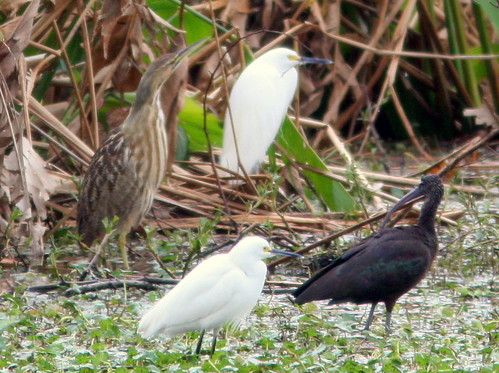
A Caspian Tern, with others of its kind in pursuit, held on to a fish:
An Anhinga dried its wings, surrounded by Common Moorhens and Blue-winged Teal:
A Roseate Spoonbill, one of many at STA-5, cast a colorful reflection:
Nearby, another spoonbill preened: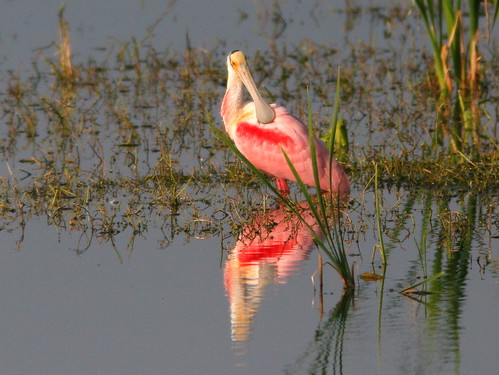
A flock of Fulvous Whistling-Ducks paddled by: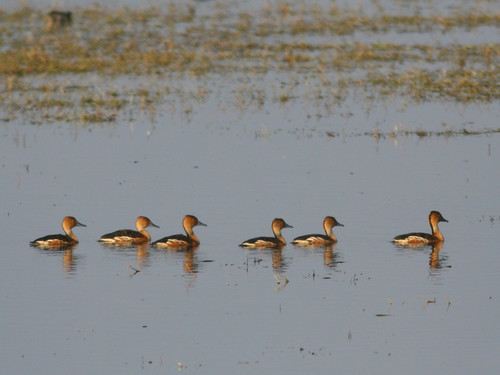
A Black-crowned Night-Heron flew over:
A Black Skimmer created a linear wake, its reflection so crisp that I had trouble telling which side of this photo belonged up: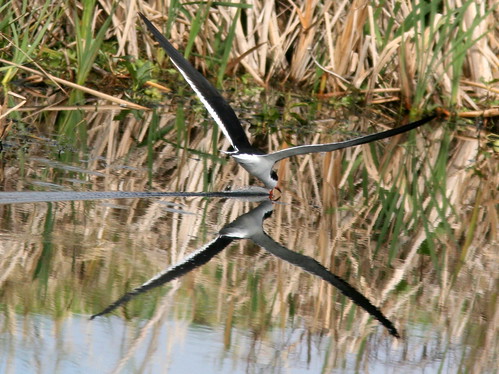
Another skimmer inscribed a curve in the water:
This skimmer displayed its unique bill in a fly-by:
This photo demonstrated the skimmer’s bill at work, close-up and personal: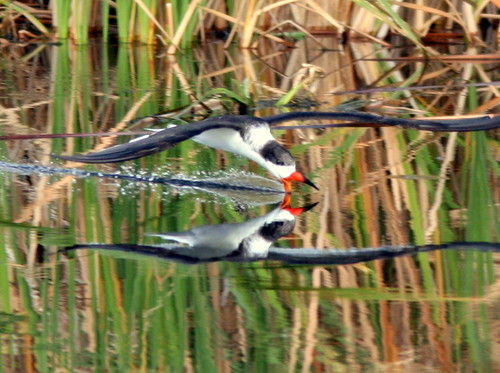
A male Snail Kite hunted for Apple Snails:
This is one of at least two pairs of Snail Kites that were present:
Two Cassin’s Kingbirds, vagrants from the Western US, so common in our New Mexico front yard, caused excitement:
A pair of Western Kingbirds, a species which wanders to Florida more commonly, provided a nice plumage comparison. Note the softer gray on its head and lack of contrast with the light chin: